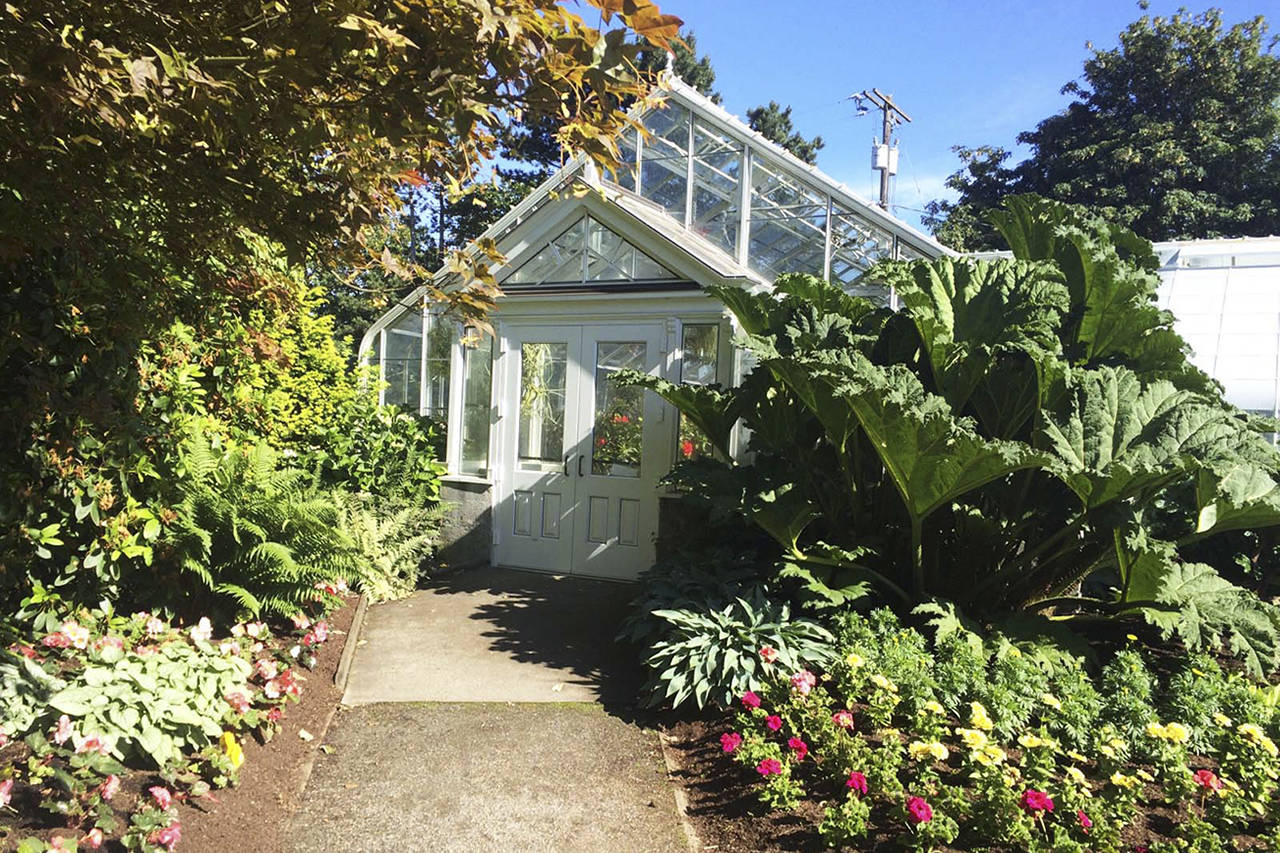Specimen plants are not native to our geographical area. They are unique, and they stand out.
When choosing specimen plants to add interest and focus to your garden, consider their place of origin and select those that are likely to grow in our climate.
Our coastal areas are in Zones 8 and 9, with our lows normally bottoming out about 20 degrees Fahrenheit. Our temperate, maritime climate includes cool, mild summers and wet, windy winters. Most areas have about 190 days and 80-plus inches of rain per year. (Elma is a little colder and drier, with only 65 to 70 inches of rain.)
For success, look for plants that originate in our hardiness zones with similar climate statistics. If your garden is on the coast, look for plants that are deer-resistant, can cope with winds and salt air, don’t need summer heat, and like dampness.
Here are a few spectacular non-native plants that have done well in the Harbor area:
dinosaur plant
This monster South American plant grows to 8 feet tall with leaves that can reach 4 to 8 feet across. Also called Chilean rhubarb, it’s related to garden rhubarb. The stalks are edible and can be used in salads or made into marmalade, liquor or beer. Leaves die back each winter, returning bigger each spring. This fast-growing plant likes soil rich in organic matter that doesn’t dry out. Be sure to water in July and August, when our rains take a break. The leaves and stalks have spiky “hairs” that keep deer away. This might not be the best choice around small children.
monkey puzzle tree
Another South American plant, the monkey puzzle tree’s branches and trunk are covered in sharp pointed scale-like leaves. Sometimes misclassified as an evergreen, this tree loses its leaves individually rather than all at once. Each leaf may live as long as 24 years! The tree can live up to a thousand years! This slow growing tree reaches 70-90 feet. It tolerates varying soils as long as drainage is good, thrives in rain, and, liking our cloudy weather, is is not too particular about light conditions.
Palm trees
Although most palms are tropical, three do well here. All have fan-shaped fronds, handle the salt air well, are deer-resistant, and tolerate winds and short runs of below-zero temperatures. THey also prefer coastal climates in full sunlight.
Chinese windmill palm — Native to China, this palm has a moderate growth rate and can reach heights of 25 to 40 feet. Although it can grow at elevations up to 7,000 feet, it prefers sea level.
Mexican fan palm — From Mexico, this palm is the fastest-growing and can be 100 feet tall. These palms are the ones whose mature leaves bend down and form a “skirt” of thatch.
Mediterranean fan palm — Native to the Mediterranean islands, this palm does well in our climate, though the cooler temperatures slow its growth. It can reach 20 feet in height, sometimes with multiple trunks. Preferring full sun, it tolerates poor soil, wind, rain and deer. In spite of nasty spines on its leaf stalks, this is probably the most common palm grown in our area.
You might also consider the Ocean Shores palm, which isn’t really a palm at all. From the asparagus family, it is related to agave and yucca. Native to Polynesia, it can grow quickly up to 20 feet. It has a flexible trunk that takes the stronger Ocean Shores winds and rains better than the true palms.
There are over 25 species of Cordyline available, not all of which develop trunks to look like palms. Be sure to select one that has a good start on its trunk, or you may end up with a yucca look-alike without the flower stalks.
Consider specimen plants for your garden. They are sure to garner admiration from your visitors.
***
The 2017 Grays Harbor Home and Garden Show is this weekend at the Elma fairgrounds. At 1 p.m. Saturday, Sam Benowitz of Raintree Nursery will show the best tree fruit and berry varieties for our climate; and Ciscoe Morris will bring his signature style to the stage at 1 p.m. Sunday.
Dauna Koval is a WSU Master Gardener intern, class of 2016. She lives half-time in Ocean Shores and half-time in Renton, where she is growing specimen plants to take out to the beach.


